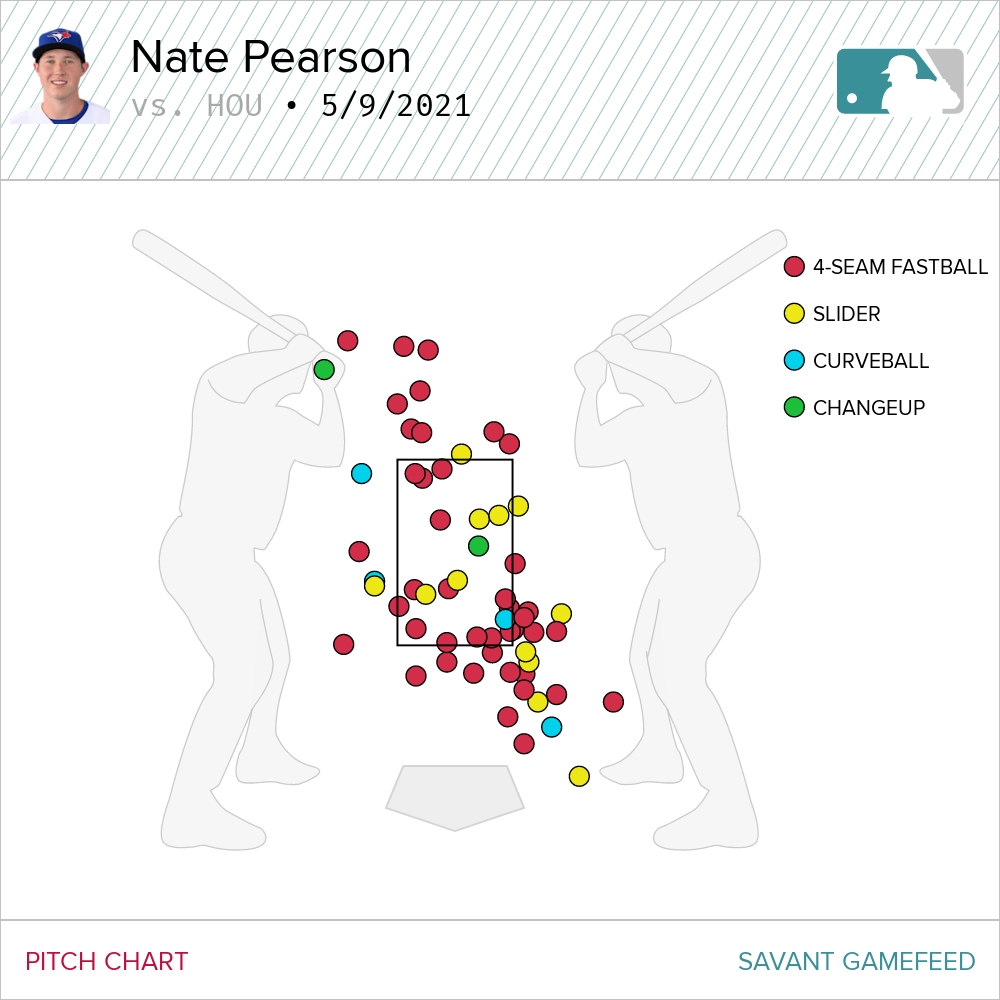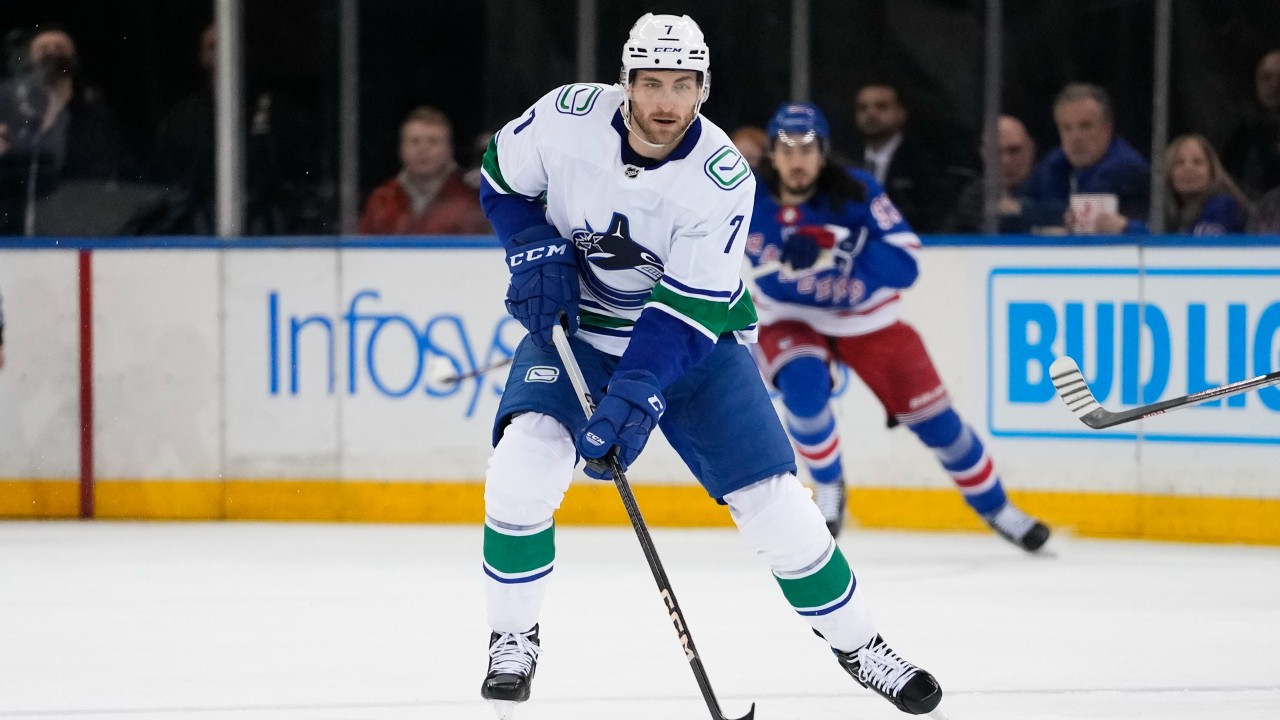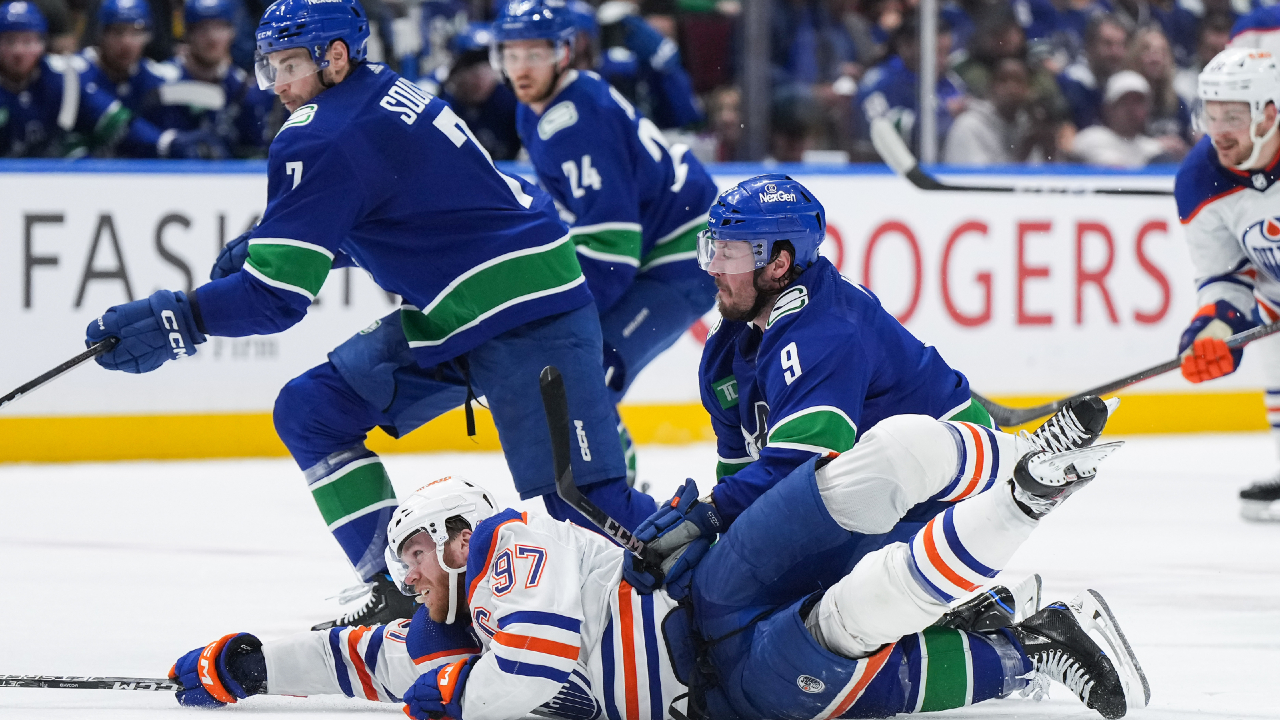
For Nate Pearson, Sunday was a long time coming. Since last we saw the explosive Toronto Blue Jays right-hander on a big-league mound, striking out five of the six Tampa Bay Rays he faced in a laughably dominant post-season relief appearance last September, a minor odyssey has played out.
There was an entire winter’s worth of work, training daily at the club’s new player development complex in Dunedin, Fla., to continue honing his fastball command, sharpening three secondary pitches, and building the physical base he’ll need to log the kind of innings he wants to someday. There was a strong spring training debut immediately undone when Pearson was diagnosed with an adductor strain days later. There was a rehabilitation, a throwing progression, a return to the mound, and, demoralizingly, a re-aggravation of the adductor issue just as Pearson thought he was over it.
He had to start spring training over again. He had to break down his delivery granular action by granular action, searching for the source of the stress that kept producing groin issues. He had to tweak his mechanics, learning how to throw with, in his words, “less violence.” He had to build his pitch count back up slowly, deliberately, during intra-squad games and alternate site scrimmages while the regular season began without him. He had to accept a minor-league assignment — a backwards step in his ascendent career — to keep refining that mechanical adjustment and find his sea legs in live competition.
All that time and effort, all that work the cameras don’t catch, led to Pearson taking the mound after the top of the first inning in Houston Sunday to make his 2021 big-league debut. Seven-plus months after his last time competing at the level, he had to be excited. He had to feel like he’d finally reached the end of a winding journey. But for Pearson, the journey’s just begun.
That much is clear after the Blue Jays top prospect lasted only 2.1 innings in a 7-4 loss to the Houston Astros. It wouldn’t be fair to say Pearson had zero command. But it wouldn’t be accurate to say he had any more than next to none.
He walked five. He didn’t strike out any. More than half of his pitches were ruled balls. And at least half of those were uncompetitive, missing the zone by a foot or more. After running up 12 swinging strikes while facing six batters in that bullying post-season outing against the Rays, Pearson followed it up by getting one from 16 Astros.
That kind of outing-to-outing performance fluctuation — never mind the seven months in between — isn’t uncommon for young pitchers. Still only 24, Pearson is massively inexperienced and undeniably a work in progress. He was never going to become Justin Verlander overnight. Development doesn’t stop once you reach the big leagues. And for no other class of ballplayer is that more true than starting pitching.
What that looked like for Pearson when he debuted in the majors last July was that he couldn’t command his huge fastball consistently. It’s an atomic pitch, but it isn’t worth much if he can’t locate it in the zone. That’s fair criticism considering Pearson’s results (13 walks in 18 MLB innings entering Sunday). And Pearson himself admits it’s an area of intense focus as he prepares between outings. But back on a big-league mound for the first time in 32 weeks, he still didn’t have it.
Perhaps seeking to establish that fastball command early, Pearson used his heater for 16 of the first 20 pitches he threw in a dicey opening frame. He fell behind the first batter he faced, walked the next on four pitches, and started Alex Bregman with two misfires nowhere near the plate. The mounting frustration was plain to see in his body language.
But Pearson got Bregman to fly out with an elevated heater, and ultimately found a way to strand both the walk and a hard-luck single off the end of Yordan Alvarez’s bat. The way he got there didn’t look great, throwing only 11 of his 20 pitches for strikes. But Pearson didn’t pay for it.
Second inning, similar story. Eight of the first nine pitches he threw were outside the zone, producing back-to-back walks. And as Pearson fell behind the next batter, 3-0, he started talking to himself on the mound.
In the dugout, Blue Jays pitching coach Pete Walker was on the phone. In the bullpen, both Anthony Kay and Joel Payamps were getting loose. Behind the dish, Reese McGuire was setting up middle-middle on every pitch he called, endeavouring to give Pearson the most centred target possible and encourage him back onto the plate.
Pearson found it momentarily, getting two quick fly outs on four pitches. But just like that, it was gone again. He fell behind Jose Altuve and gave up a hard single to load the bases. He fell behind Michael Brantley and walked him to bring in a run. He got ahead of Bregman, but still had to use six pitches to induce the inning-ending pop-up he needed.
In all, it was a 30-pitch inning — a second straight stressful frame. It was exactly what Pearson’s trying to avoid: Wild, inefficient, laborious. And yet, looking up at the scoreboard, there was only a run in on the two hits and four walks. For as ugly as the process looked, the results weren’t bad.
But you can’t survive like that for long at the big-league level. The hitters are too good; too aware of when a guy on the mound is searching and can’t locate. So, the Astros waited Pearson out in his third inning, as Yuli Gurriel drew a four-pitch, one-out walk, before Kyle Tucker got ahead, 3-1, and sent a ball to the right field wall for a triple. When Robel Garcia — a lifetime .236 hitter in nearly 400 minor-league games — rifled another base hit into right two pitches later, Charlie Montoyo didn’t hesitate. Pearson’s day was done.
Ultimately, he used 64 pitches — only 28 of them strikes — to record seven outs. His pitch chart paints the picture of an erratic young arm whose command came and went over 2.1 innings, but mostly went:

Now the Blue Jays have to decide where they, and Pearson, go from here. What makes the most sense? Do you send Pearson back to triple-A to keep working on it? He clearly needs to continue refining his new mechanics. But you’d be dealing a top prospect a demoralizing blow. What would it do to his confidence if he’s made to feel like he’s perpetually one bad outing from a demotion?
And can you afford to commit to keeping one of your highest-upside arms out of the majors for who knows how long at a time when you desperately need innings covered? Shouldn’t you at least give him a mulligan and a fresh shot in five days? Maybe Walker can help Pearson find something in a bullpen between outings. Maybe Pearson just needed to get the first-MLB-start-in-seven-months nerves out of the way and will be more poised his next time out.
But maybe what happened Sunday happens again. Maybe, at that point, the Blue Jays won’t be positioned to cover nearly six innings behind Pearson. Maybe there won’t be a scheduled off-day conveniently following. Maybe another brief, ineffective start creates greater roster consequences than merely a rough afternoon for a still-developing kid.
Then again, what exactly would another minor-league stint be in the service of? Pearson’s already demonstrated he can throw strikes in the minors. Over 127 innings pitched below the MLB level, Pearson’s walked only 33. If he goes back down and doesn’t issue walks, what will he be proving that hasn’t already been proven? Hasn’t the time come to give him an extended opportunity to test himself against more advanced competition?
There are no easy answers. Just like there is no easy way to command velocity and stuff like Pearson’s. We’re talking about something only the best of the best can do. And we’re talking about the development of a potential frontline starter, which is not something that happens quickly.
Kevin Gausman was a more hyped prospect than Pearson as the No. 4 overall selection in the 2012 draft, but is just now fulfilling his potential at 30. Joe Musgrove, a 2011 first round pick, is finally figuring it out this season at 28. Jacob deGrom — the game’s best pitcher — didn’t establish himself in the majors until he was 26, and truly hit his stride at 30.
Pearson’s 24. He’s thrown 20.1 MLB innings. He’s thrown 147.1 as a professional. To see his development through will take patience — from him, from his club, from fans, from everyone. There’s no doubt as to the potential he possesses. And there’s no predicting when — or even if — he’ll realize it.
All we know is that these things take time. That raw ability like his doesn’t come along often. That for as hard as it is to throw baseballs exactly where you want them at 97-m.p.h., he’ll need to if he’s going to last as a starter in the majors. And that for Pearson, the journey’s just begun.





